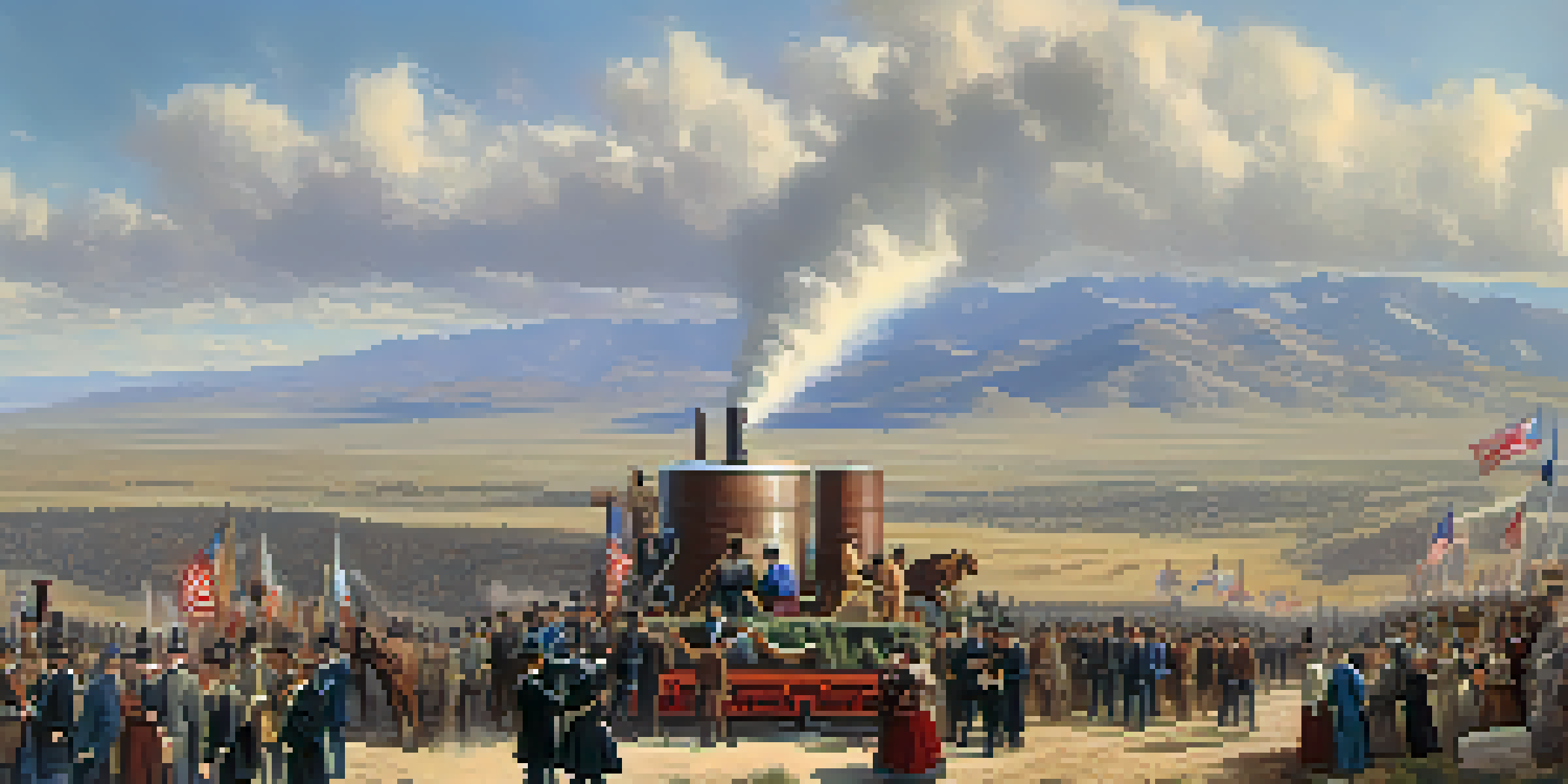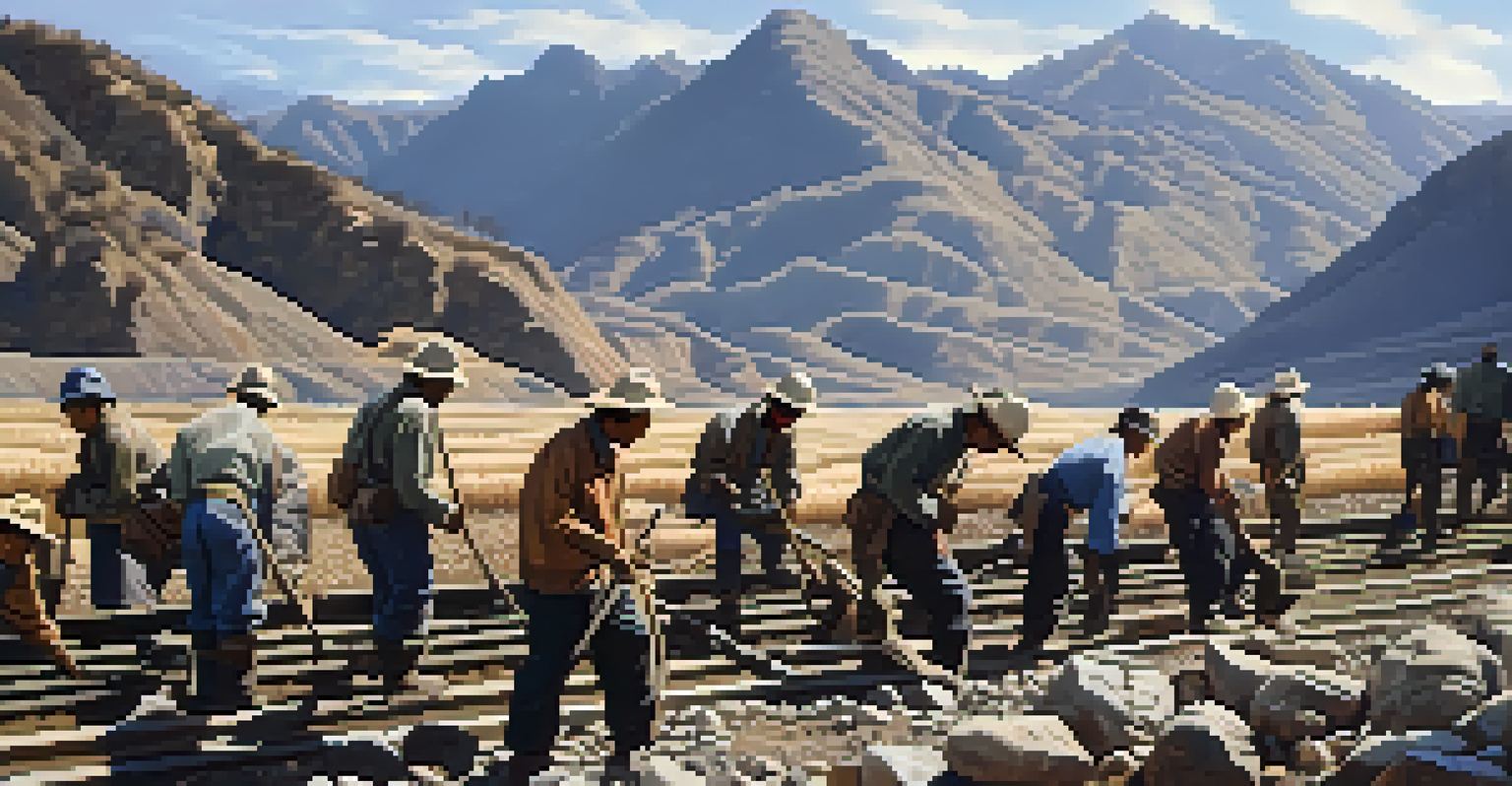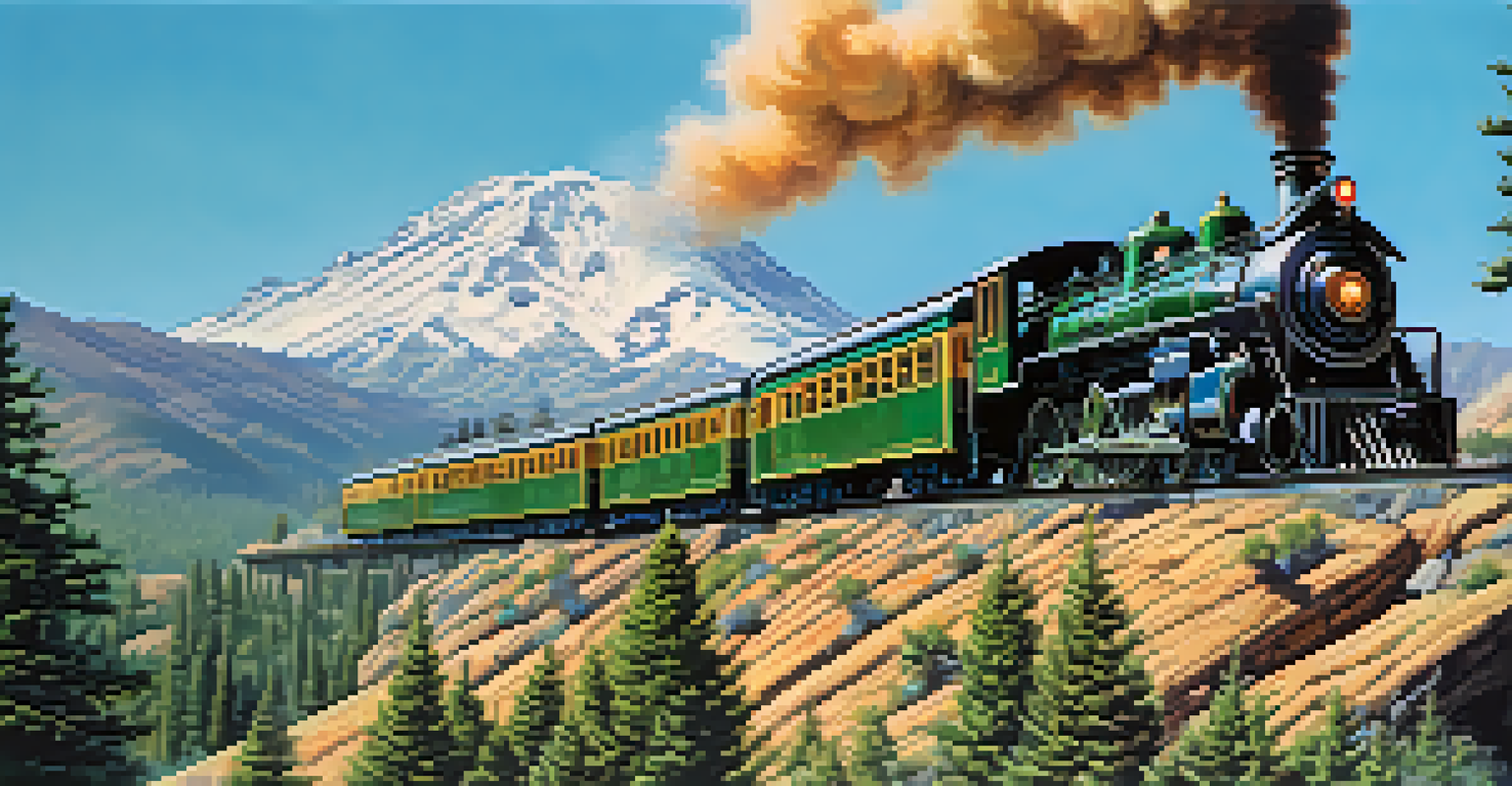The Transcontinental Railroad: Connecting California to the East

The Birth of the Transcontinental Railroad
The idea of a Transcontinental Railroad emerged in the early 19th century, driven by the desire for faster travel and trade across the vast United States. With the discovery of gold in California in 1848, the demand for a reliable transportation route skyrocketed. This led to debates in Congress, as various factions argued over the best path to take, showcasing the growing pains of a nation expanding westward.
The railroad is a great civilizer, a great uniter, a great promoter of peace and good will among men.
In 1862, President Abraham Lincoln signed the Pacific Railway Act, paving the way for the construction of the railroad. This act provided federal support and land grants to two competing companies: the Central Pacific and the Union Pacific. Each company was tasked with building their respective sections of the railroad, which sparked a race that would forever change the landscape of America.
The construction was fraught with challenges, from harsh weather conditions to labor shortages. Yet, the dream of connecting the east to the west fueled the determination of workers, many of whom were immigrants facing unimaginable hardships. Their resilience laid the tracks that would soon intertwine the destinies of diverse communities across the nation.
The Role of Immigrant Labor
One of the lesser-known stories of the Transcontinental Railroad is the vital role of immigrant laborers, particularly Chinese workers. As demand for labor surged, thousands of Chinese immigrants arrived, drawn by the promise of jobs and prosperity. They faced not only the daunting physical challenges of the work but also racial discrimination and harsh living conditions.

These workers tackled some of the most dangerous and difficult tasks, including blasting through mountains and laying tracks across treacherous terrain. Their hard work and dedication were instrumental in completing the Central Pacific portion of the railroad. Despite their immense contributions, they often received lower wages and faced exploitation, highlighting the stark realities of the American dream.
Immigrant Labor Fueled Construction
Chinese workers played a crucial role in the building of the Transcontinental Railroad despite facing significant challenges and discrimination.
The legacy of these immigrant laborers is a testament to their strength and perseverance. Today, we recognize their contributions as an essential part of American history, reminding us that the railroad was not just an engineering feat but also a symbol of diverse cultures coming together for a common goal.
Engineering Marvels: Challenges and Triumphs
Building the Transcontinental Railroad was not just about laying tracks; it was an extraordinary engineering challenge. The project required innovative solutions to navigate the Sierra Nevada mountains and the Great Plains. Engineers devised new techniques and tools, pushing the boundaries of technology at that time.
The Transcontinental Railroad was an extraordinary engineering achievement and one of the greatest gifts to the American people.
One of the most notable achievements was the construction of the famous Donner Pass, where workers had to dig tunnels and create bridges to ensure the railroad's viability. This monumental task took years and tested the limits of both human endurance and engineering skill. The successful completion of such a daunting project showcased the ingenuity and determination of American workers.
The triumph of the Transcontinental Railroad was marked on May 10, 1869, when the last spike, known as the Golden Spike, was driven at Promontory Summit in Utah. This moment not only symbolized the physical connection of the nation but also represented a unifying achievement for a country divided by geography and culture.
Economic Impact: Transforming Commerce
The completion of the Transcontinental Railroad had a profound impact on the American economy, revolutionizing the way goods and people moved across the country. It significantly reduced travel time, allowing for quicker shipping of agricultural products, raw materials, and manufactured goods. Businesses in the East and West could suddenly access each other’s markets, fostering new economic opportunities.
As towns and cities sprang up along the railroad, the economic landscape transformed dramatically. The railroad facilitated not just commerce but also the movement of people, leading to a population boom in California and other western territories. This migration helped to shape the cultural diversity of the region, as people from various backgrounds sought new opportunities.
Economic Transformation of America
The railroad revolutionized commerce and connectivity, significantly impacting the economic landscape by facilitating trade and migration.
Moreover, the railroad contributed to the rise of industries like steel, coal, and timber, which were essential for its construction and operation. This interconnectedness of various sectors laid the groundwork for America’s industrial revolution, making the Transcontinental Railroad a pivotal element in the nation's economic development.
Cultural Exchange: Bridging Communities
The Transcontinental Railroad was more than just a means of transportation; it served as a vital conduit for cultural exchange. As trains traversed the country, they brought people from diverse backgrounds together, fostering interactions that would influence American culture. This mingling of traditions, languages, and customs enriched the social fabric of the nation.
Travelers could experience the unique offerings of different regions, from the bustling markets of San Francisco to the historic charm of Chicago. The railroad made it easier for families to reunite, for businesses to network, and for artists to share their work across state lines. This cultural exchange helped to create a shared national identity that celebrated diversity.
However, it also brought challenges, as the influx of new populations sometimes led to tensions and conflict. The railroad’s impact was a double-edged sword, highlighting both the opportunities for unity and the struggles of coexistence in a rapidly changing America.
Environmental Changes: A Lasting Legacy
While the Transcontinental Railroad opened up new opportunities, it also had significant environmental repercussions. The construction process altered landscapes, disrupted ecosystems, and paved the way for industrial expansion that would come to characterize the American West. These changes sparked debates that continue to this day about the balance between progress and preservation.
The introduction of railroads led to increased settlement and agriculture in previously untouched areas, transforming vast expanses of wilderness into farmland and urban centers. This rapid development impacted local wildlife and natural resources, often leading to ecological imbalances. The consequences of these actions highlight the need to consider environmental sustainability in future infrastructure projects.
Cultural Exchange and Diversity
The Transcontinental Railroad served as a conduit for cultural exchange, uniting diverse communities and fostering a shared national identity.
Today, as we look back on the legacy of the Transcontinental Railroad, we must acknowledge both its achievements and its costs. Understanding this complex history can inform our approach to modern transportation systems and inspire us to seek solutions that honor both progress and the environment.
The Transcontinental Railroad Today: A Symbol of Connectivity
The Transcontinental Railroad remains a powerful symbol of America's commitment to connectivity and progress. Its historical significance is celebrated in museums and monuments, serving as a reminder of the ingenuity and determination that shaped the nation. Many of the original routes are still in use today, adapted to modern trains and technologies.
In a world increasingly focused on globalization, the railroad's legacy resonates even more. It exemplifies how infrastructure can bring people together, fostering trade, communication, and cultural exchange across vast distances. The lessons learned from its construction continue to inform contemporary discussions about transportation and community building.

As we reflect on the Transcontinental Railroad, we recognize its role in shaping not just the physical landscape of America, but also its social and economic fabric. It serves as a reminder of the enduring power of collaboration and innovation in overcoming challenges and connecting people from all walks of life.